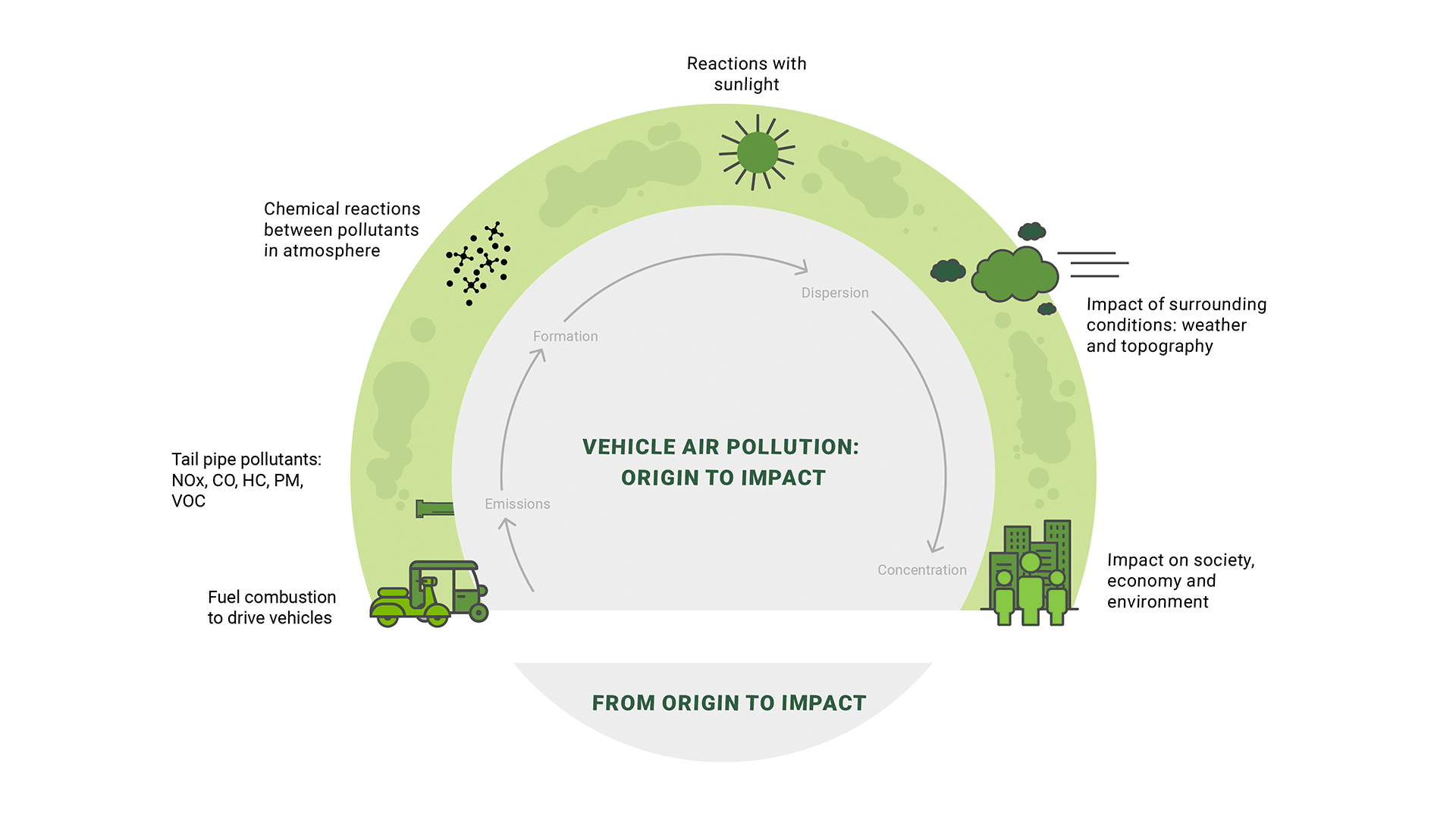Cars, bikes, trucks, and other Internal Combustion Engine (ICE) vehicles generate energy through combustion. This combustion however is only partial, and the tailpipes release a mix of harmful air pollutants. The quantity of these emissions and the safe limits depend on various factors like vehicle maintenance, driving conditions, fuel type, etc. These vehicles have upstream emissions due to the production and distribution of fuels.
These emissions contribute towards climate warming, extreme weather conditions, low agricultural yields, smog, respiratory and heart diseases, and other health impairments that lead to higher mortality, and increase medical expenses for the common person.









